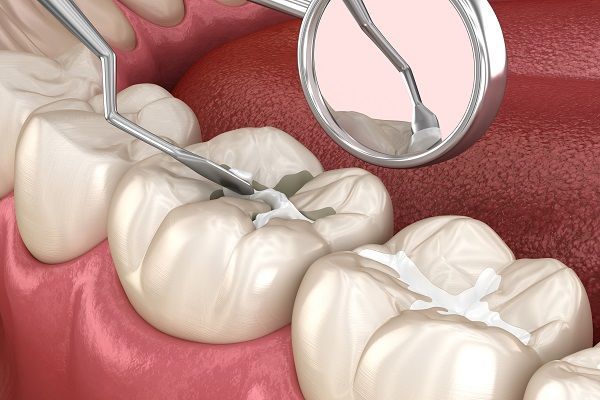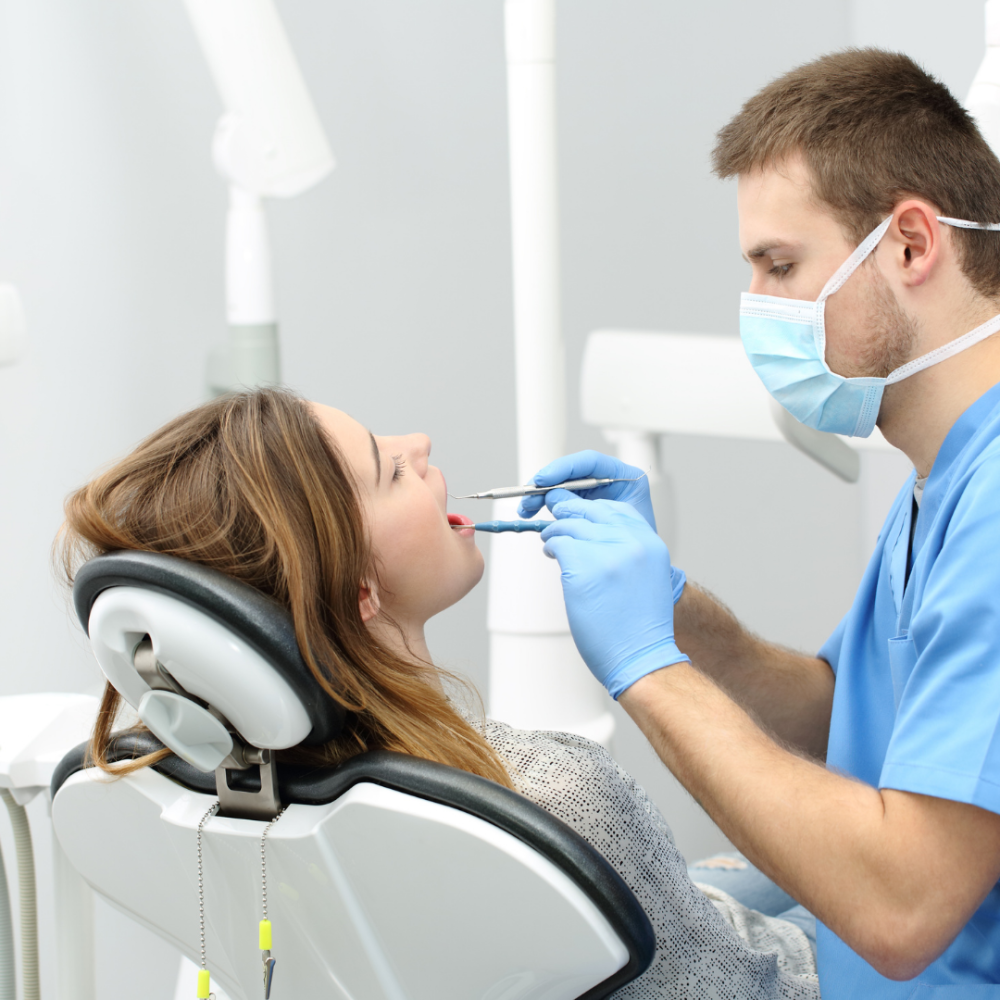Preventing tooth decay is what people typically consider to be the main goal of oral health. While cavity prevention is obviously important, healthy gums are the true foundation of not only oral health but overall health. As a Healthline article so succinctly puts it, “Even if you’re cavity-free and have the pearliest chompers in town, that doesn’t mean you’re immune to gum disease. Since it’s usually painless, most people have no idea that anything is wrong with their gums.”
Because gum disease is so stealth, it could be well along before symptoms become obvious. In fact, although we talk about two types of gum disease – gingivitis and periodontitis – they’re basically one and the same , with periodontitis being the advanced stage of gingivitis. Together, they are called periodontal (gum) disease.
The National Institute of Health defines periodontal disease as “… inflammation and infection that destroys the tissues that support the teeth, including the gums, the periodontal ligaments, and the tooth sockets (alveolar bone).” We offer a breakdown of gingivitis and periodontitis – including symptoms, risk factors, and prevention.
How Gum Disease Starts
In most cases, the development of periodontal disease begins with plaque, which is a sticky film composed mainly of bacteria. Plaque forms on your teeth when starches and sugars in food interact with bacteria normally found in your mouth. Brushing your teeth twice a day and flossing once a day removes plaque, but it very quickly forms again.
If left to establish itself, plaque can harden under your gumline into tartar (calculus). Filled with bacteria, tartar is harder to remove. The longer plaque and tartar remain on your teeth, the more damage they can do. You can’t get rid of tartar by brushing and flossing. Only a professional dental cleaning can remove it. If not removed, plaque sets up the conditions for gingivitis.
Symptoms of Gingivitis
Healthy gums are firm and pale pink and are fitted tightly around the teeth. The following changes indicate trouble:
- Swollen or puffy gums
- Dusky red or dark red gums
- Gums that bleed easily when you brush or floss
- Receding gums
- Tender gums
- Bad breath
We’d like to call special attention to the issue of bleeding gums. You may have seen the toothpaste commercial that asks if bleeding gums should be a cause for concern. The answer is definitely yes ! However, the commercial fails to communicate the urgency of seeing your dentist as soon as possible for diagnosis and treatment to prevent the progress of the disease. Bleeding gums always indicate a condition that needs immediate attention! Brushing with one particular toothpaste brand won’t treat the cause.
Risk Factors for Gingivitis
Practically speaking, almost everyone can develop gingivitis. While many contributing factors can be controlled, others can’t. For example, people with a compromised immune system, certain medical conditions (such as uncontrolled diabetes ), or genetics are more likely to be at risk. Other factors include the following:
- Poor oral care habits
- Smoking or chewing tobacco
- Dental restorations that don’t fit properly or misaligned natural teeth that are difficult to clean
- Certain drugs – such as phenytoin for epileptic seizures – and some calcium channel blockers, which are prescribed for angina, high blood pressure, and other conditions
- Hormonal changes – such as those related to pregnancy, menstrual cycle, or use of birth control pills
- Older age
- Dry mouth
- Poor nutrition, including vitamin C deficiency
Treatment and Prevention for Gingivitis
Again, early detection and treatment for gingivitis can prevent progress into periodontitis, which left untreated (or treated too late) results in bone infection and tooth loss. Periodontal treatment will vary depending on your individual case and your stage of gum disease and may include both surgical and nonsurgical methods. Your dentist and dental hygienist may be able to treat very early-stage gum disease, but more advanced stages will require the treatment of a periodontist. To learn more about this specialty, read our blog post, “ Signs You Need a Periodontist .”
The old saying, “An ounce of prevention is worth a pound of cure,” certainly applies to preventing gingivitis. Here are the most effective ways to keep it at bay:
Practice good oral hygiene – Brush your teeth for two minutes at least twice daily — in the morning and before going to bed — and floss at least once a day. If possible, brush after every meal or snack, or as your dentist recommends. Flossing before you brush allows you to clean away the loosened food particles and bacteria.
Schedule regular dental visits – See your dentist or dental hygienist regularly for cleanings, usually every six months. If you have risk factors that increase your chance of developing periodontitis, you may need professional cleaning more frequently. Annual dental X-rays can help identify diseases that are not seen by a visual dental examination and monitor for changes in your oral health.
Follow healthy practices – Leading a lifestyle that includes healthy eating and managing blood sugar if you have diabetes also are important to maintaining gum health.
Symptoms of Periodontitis
At this stage, symptoms are more pronounced than those signifying gingivitis. They include the following:
- Swollen or puffy gums
- Bright red, dusky red, or purplish gums
- Gums that feel tender when touched
- Gums that bleed easily
- Pink-tinged toothbrush after brushing
- Spitting out blood when brushing or flossing
- Bad breath
- Pus between your teeth and gums
- Loose teeth
- Painful chewing
- New spaces developing between teeth
- Gums that pull away from your teeth (recede), making your teeth look longer than normal
- A change in the way your teeth fit together when you bite
Risk Factors for Periodontitis
Risk factors are the same as those for gingivitis, but with the addition of r ecreational drug use, vaping, obesity, medications that cause dry mouth or gum changes, and such diseases as diabetes, rheumatoid arthritis, and Crohn’s disease.
Treatment and Prevention for Periodontitis
As periodontitis is the advanced stage of gingivitis, follow the practices for preventing gingivitis in the first place. The process for treating periodontitis is usually extensive, depending on the stage of the disease. Our blog post – “ What is Periodontal Gum Disease? ” – provides an in-depth description of each stage within the diagnosis of periodontitis.
Surgical treatments may include the following:
- Flap surgery/pocket reduction surgery, to make scaling and root planing easier.
- Soft tissue graft, to cover exposed roots and reduce gum recession.
- Bone grafting, to prevent tooth loss and encourage bone regrowth.
- Guided tissue regeneration, to prevent unwanted tissue from interfering with bone regrowth.
- Tissue-stimulating proteins, stimulate healthy bone and tissue growth.
The Take-Home Message
Conscientious oral health practices are the best way to prevent periodontal disease. At 24/7 Local Dentist , it is our mission to provide the highest quality and most compassionate oral care to our Chicago patients, including both dental and periodontal services . Our dental specialists include our general dentist, Dr. Nilofer Khan , our periodontist, Dr. Amir Danesh , and our endodontist, Dr. Sabek . We serve the neighborhoods of Logan Square , Bucktown, Humboldt Park, and Wicker Park with the dedication that’s earned us the reputation as the Best Dentist in Chicago !










